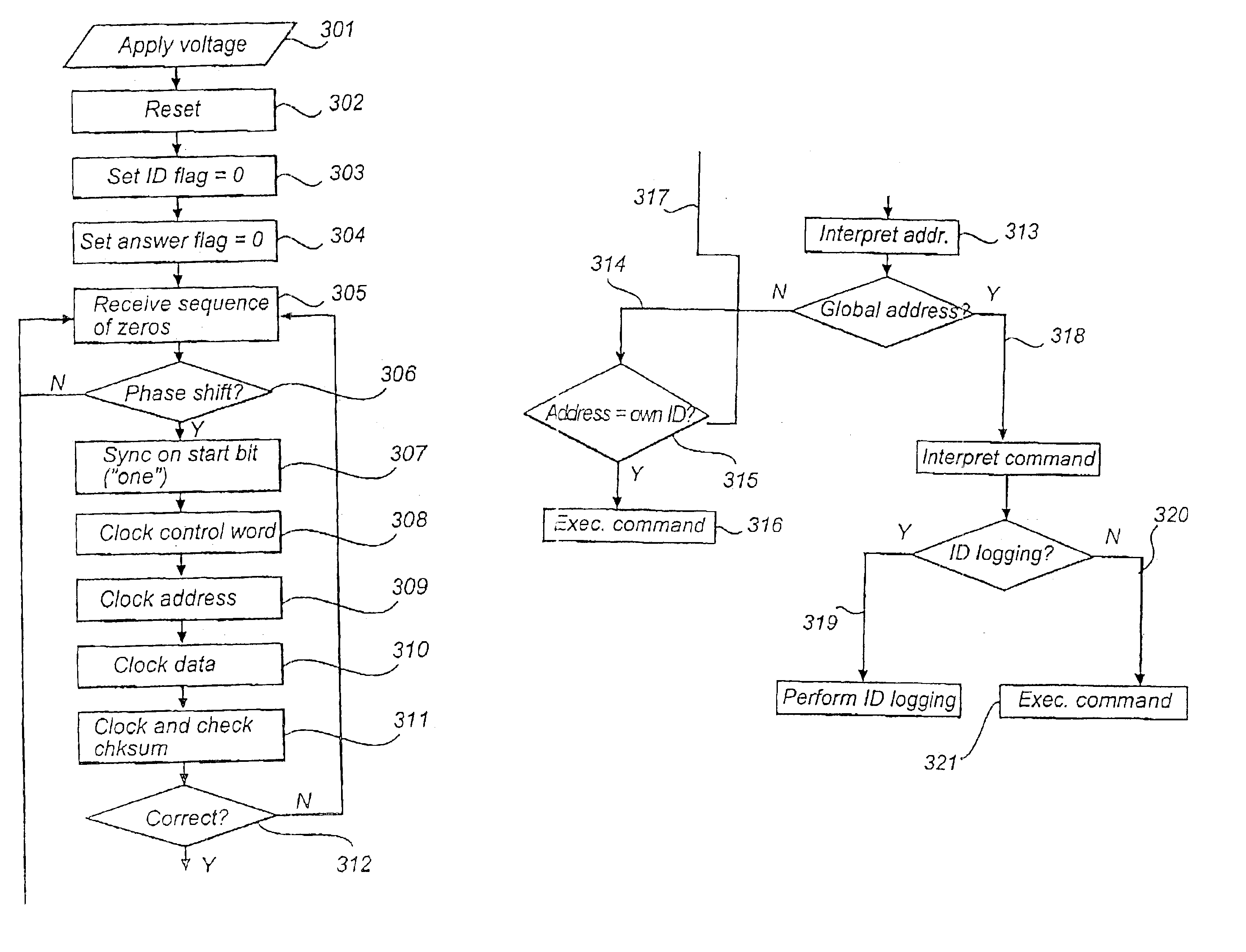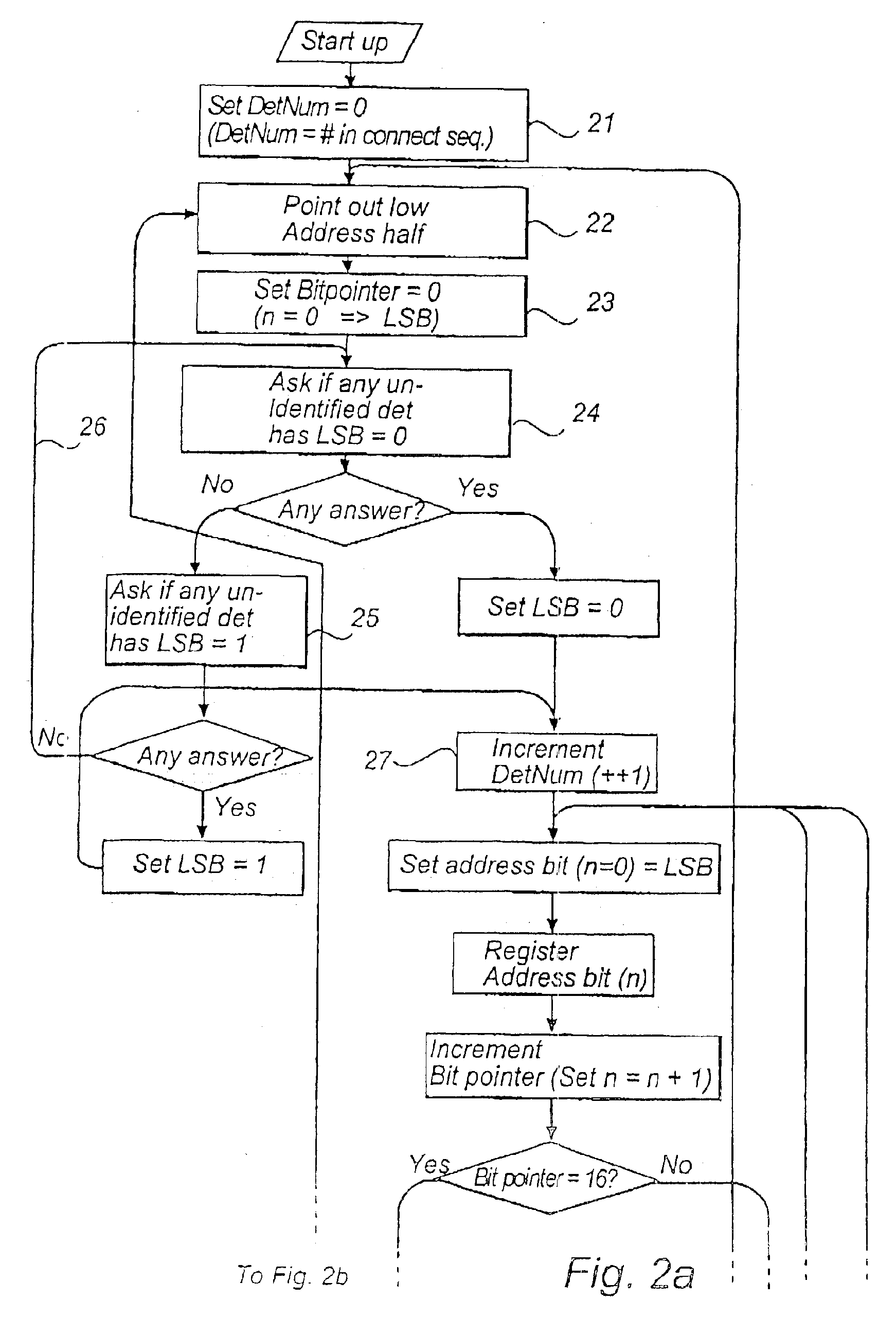Flexible detonator system
- Summary
- Abstract
- Description
- Claims
- Application Information
AI Technical Summary
Benefits of technology
Problems solved by technology
Method used
Image
Examples
Embodiment Construction
In the following some preferred embodiments of the invention will be described in more detail.
FIG. 1 shows a number of system units which are included in an electronic detonator system. A preferred embodiment of an electronic detonator system according to the invention comprises a plurality of electronic detonators 10 which are connected to a control unit 11, 12 via a bus 13. The purpose of the bus is to convey signals between the control unit 11, 12 and the detonators 10, i.e. to allow communication between them, and to supply power to the detonators. The control unit may comprise either a logging unit 11 (for example when electronic detonators are connected to the bus) or a blasting machine 12 (for instance when connected detonators are being prepared for firing and in connection with firing). Besides, the detonator system according to the invention comprises a portable message receiver 14 which is adapted to be carried by the person connecting the detonators to the bus. Via the p...
PUM
 Login to View More
Login to View More Abstract
Description
Claims
Application Information
 Login to View More
Login to View More - R&D
- Intellectual Property
- Life Sciences
- Materials
- Tech Scout
- Unparalleled Data Quality
- Higher Quality Content
- 60% Fewer Hallucinations
Browse by: Latest US Patents, China's latest patents, Technical Efficacy Thesaurus, Application Domain, Technology Topic, Popular Technical Reports.
© 2025 PatSnap. All rights reserved.Legal|Privacy policy|Modern Slavery Act Transparency Statement|Sitemap|About US| Contact US: help@patsnap.com



